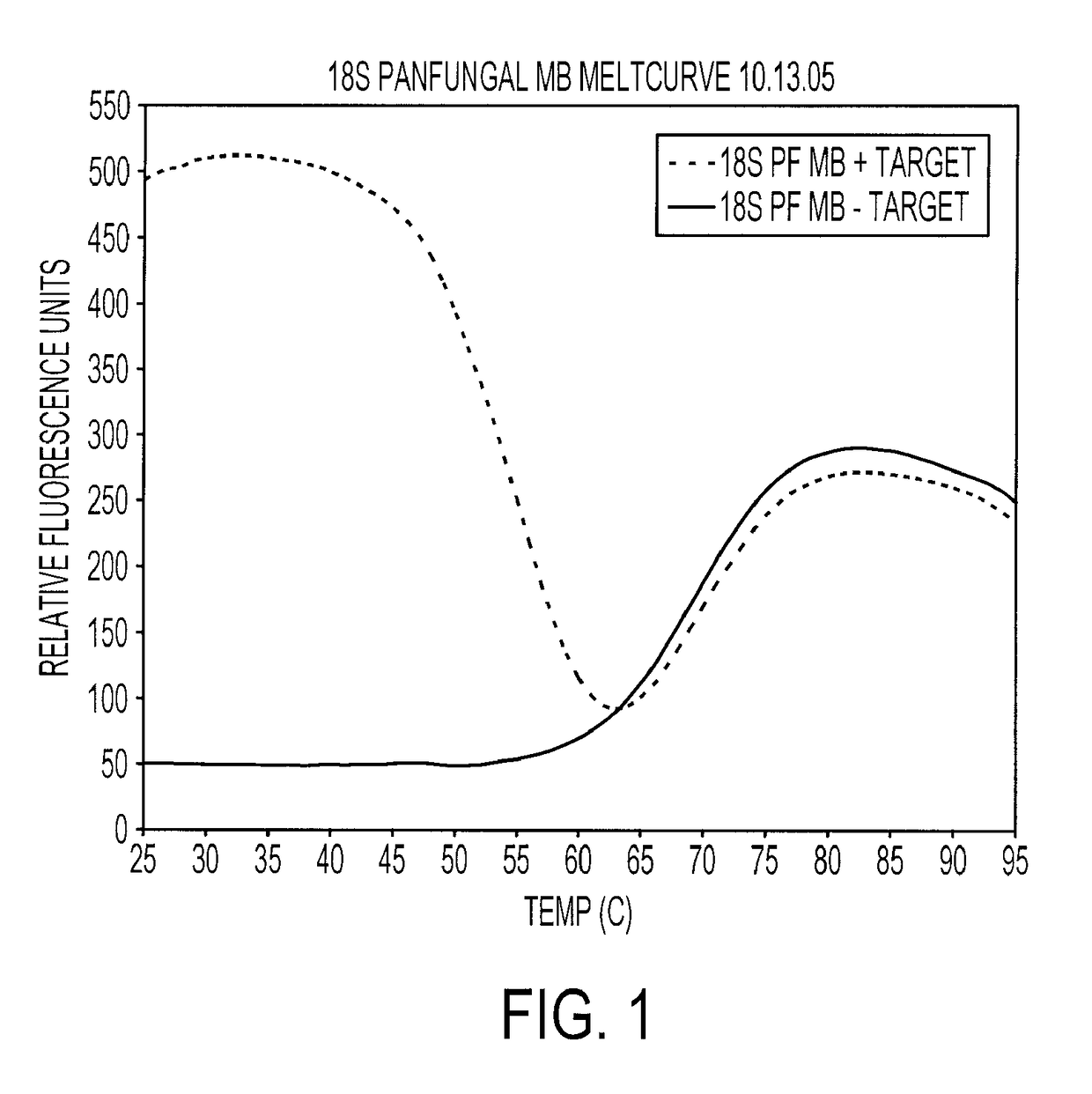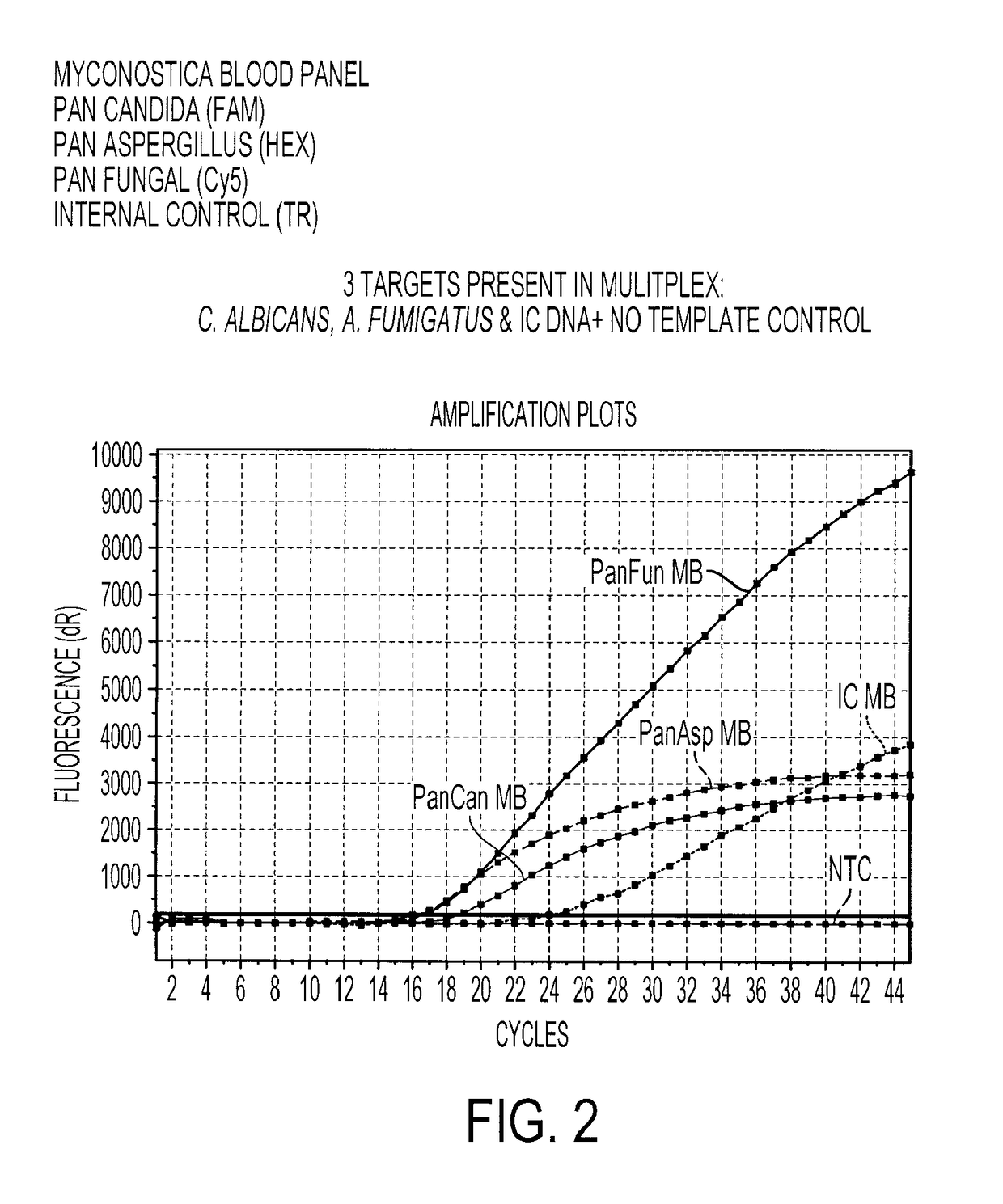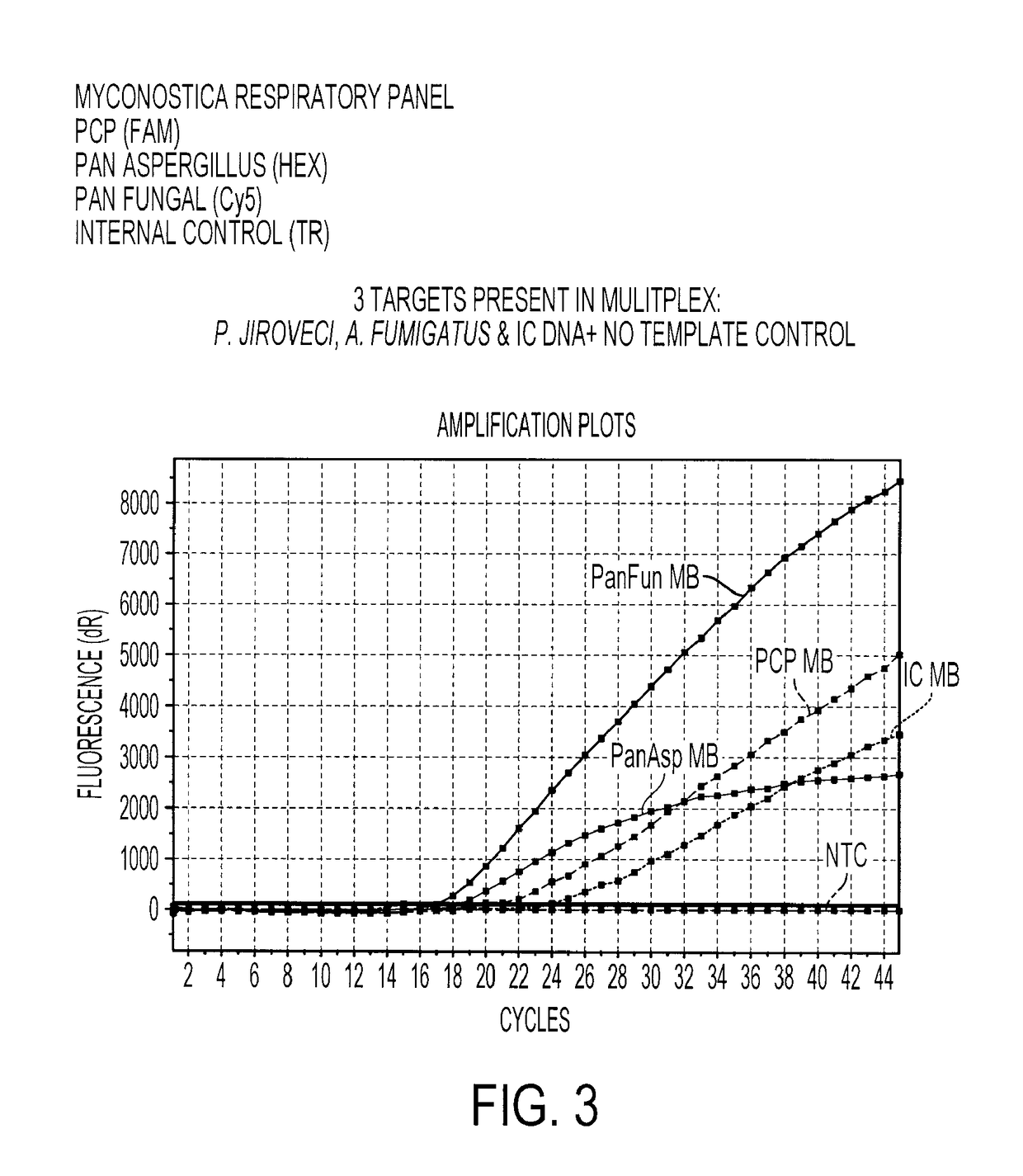Assays for fungal infection
a technology for fungal infection and assays, applied in the field of fungal infection assays, can solve the problems of morbidity and mortality, fungi are able to cause superficial and often fatal disseminated infections in immunocompromised patients, and the impact of fungal infection is often exacerbated, so as to achieve rapid and reliable detection
- Summary
- Abstract
- Description
- Claims
- Application Information
AI Technical Summary
Benefits of technology
Problems solved by technology
Method used
Image
Examples
example 1
Melting Curve for Panfungal Molecular Beacon Probes
[0190]Reported sequences for the design of primers and molecular beacon probes were used. Molecular beacon probes and DNA primers (Table 1, I) were designed using Beacon Designer 3.0 software (PREMIER Biosoft, Palo Alto, Calif.). The default software parameters were applied for all molecular beacon probe and primer construction. Molecular beacon probes were labeled with fluorophores 5-carboxyfluorescein (FAM) at the 5′ end and with dabcyl at the 3′ end. The molecular beacon probes and primers were purchased from Biosearch Technologies (Biosearch Technologies, Novato, Calif.). The hybridization properties of the molecular beacon probes were tested for the full temperature range, 25° C.-95° C., with single-stranded target oligonucleotides. Molecular beacon probe-target hybridization was performed with the Stratagene MX4000 Multiplex Quantitative PCR system (Stratagene, La Jolla, Calif.). The “Molecular Beacon Melting Curve” experiment...
example 2
Detection of Any Fungus (Panfungal Detection)
[0192]A real-time amplification assay was carried out using the primers and probes described in Table I (SEQ ID NOs: 2 to 4). The assay included DNA amplification by the polymerase chain reaction (PCR) with real-time detection utilizing molecular beacon probes. DNA from multiple fungal species were tested, together with negative controls consisting of DNA extracted from a Gram positive and Gram negative bacteria. Species tested were Aspergillus flavus, Aspergillus fumigatus, Aspergillus japonicus, Aspergillus nidulans, Aspergillus niger, Aspergillus terreus, Candida albicans, Candida dubliniensis, Candida glabrata, Candida keyfr, Candida krusei, Candida lusitaniae, Candida lipolytica, Candida parapsilosis, Candida rugosa, Candida tropicalis, Cryptococcus neoformans, Saccharomyces cerevisiae, Pneumocystis carinii, Pneumocystis jirovecii, Escherichia coli and Staphylococcus aureus. With the exception of the Pneumocystis samples, which were ...
example 3
Multiplex Detection of Aspergillus and Candida DNA
[0196]A real-time amplification assay was carried out for the detection of Aspergillus, Candida and panfungal (presence of any fungal) DNA using the primers and probes described in Table 1, I (SEQ ID NOs: 2 to 4), II (SEQ ID NOs: 6 to 7) and IV (SEQ ID NOs: 15 to 17), together with an assay for the presence of the Internal Control DNA using the primers and probes described in Table 1, III (SEQ ID NOs: 11 to 13). Fluorophores were conjugated to the beacon probes to allow detection. The fluorophores used are shown in Table 3.
[0197]
TABLE 3The fluorophores used to label each molecular beacon probeMolecular BeaconProbeFluorophoreAspergillusHEX (hexachlorofluorescein phosphoramidite)CandidaFAM (carboxyfluorescein)PanfungalCy ®5 (a registered trade mark of GELifesciences. FIG. 11 shows the structure of Cy5mono NHS ester)Internal ControlTexas Red ® (registered trade mark ofMolecular Probes, Inc. FIG. 12 shows the structureof Texas Red sulpho...
PUM
| Property | Measurement | Unit |
|---|---|---|
| temperature | aaaaa | aaaaa |
| temperature | aaaaa | aaaaa |
| temperature | aaaaa | aaaaa |
Abstract
Description
Claims
Application Information
 Login to View More
Login to View More - R&D
- Intellectual Property
- Life Sciences
- Materials
- Tech Scout
- Unparalleled Data Quality
- Higher Quality Content
- 60% Fewer Hallucinations
Browse by: Latest US Patents, China's latest patents, Technical Efficacy Thesaurus, Application Domain, Technology Topic, Popular Technical Reports.
© 2025 PatSnap. All rights reserved.Legal|Privacy policy|Modern Slavery Act Transparency Statement|Sitemap|About US| Contact US: help@patsnap.com



